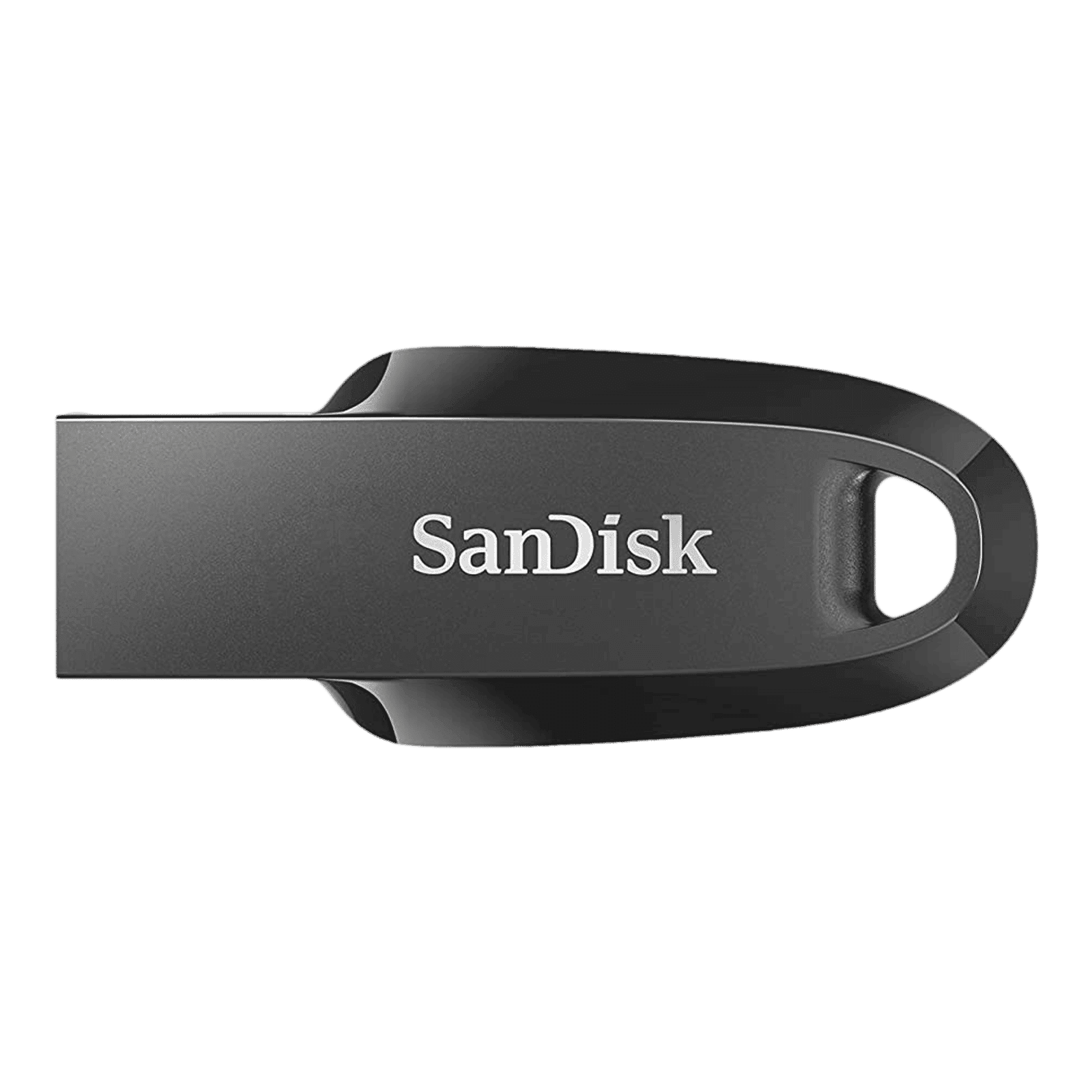
Consumer Electronics
•04 min read

Buy SanDisk Ultra Curve 64GB USB (3.2) Pen Drive (Compact Design, Black ) online at best prices from Croma. Check product details, reviews & more. Shop now!
In today’s fast-paced digital world, choosing the right storage solution can significantly enhance your productivity. When it comes to flash memory vs SSD, understanding the nuances between these technologies can help you make well-informed decisions tailored to your digital lifestyle. Along this journey, you'll discover how flash memory's portability and affordability contrast with the robust performance, durability, and capacity of SSDs, all complemented by the exciting benefits such as earning NeuCoins with every purchase on Tata Neu.
Flash memory is a type of non-volatile storage that retains data without the need for a power source. Commonly found in USB drives, memory cards, and embedded devices, flash memory is compact and cost-effective, making it a popular choice for portable storage solutions. Its inherent design ensures that data remains safe, offering practicality for everyday use.
Solid-State Drives (SSDs) elevate the concept of flash memory by incorporating advanced controllers and other components that enhance performance. Primarily used in high-performance computing, laptops, gaming consoles, and other computing devices, SSDs deliver superior speed and reliability. While they are built on the backbone of flash memory technology, SSDs have been optimised for tasks requiring rapid and consistent data access.
At the heart of both systems is NAND flash technology. However, SSDs integrate additional control mechanisms that improve efficiency and performance. This distinction underscores why SSDs can manage high workloads more effectively compared to simpler flash storage devices.
Speed is a crucial factor that differentiates these two storage solutions. SSDs typically outperform standard flash memory when it comes to read and write speeds, making them an excellent choice for applications that demand consistent, high-speed data processing such as gaming or video editing. Conversely, flash memory, while not as fast, remains highly effective for portable storage tasks like quick data transfers and everyday file management.
Both storage types utilise the principle of wear leveling to extend their operational life. While SSDs are engineered to handle repeated, intensive data writing through enhanced technology, flash memory devices may have a shorter lifespan under heavy use due to limited write cycles. This makes SSDs particularly suitable for long-term storage needs in scenarios where reliability is paramount.
Flash memory offers several benefits such as portability, cost efficiency, and compatibility with a vast range of devices. For many users, its ease of use and affordable price point make it an attractive option. However, it does have its limitations; the speed and endurance of flash memory can fall short in environments that require extensive, sustained data processing.
SSDs, while built upon the foundation of flash memory, deliver superior speed and durability due to their advanced controllers. This makes them ideal for scenarios that demand quick data access and robust performance. Users who invest in SSDs can expect a reliable storage experience that supports intensive applications such as high-definition gaming, creative work, and complex multitasking. Nonetheless, it is important to note that cost can be a consideration for some, as SSDs are generally more expensive compared to simpler flash memory devices.
Each storage solution shines in different contexts. SSDs are highly recommended for long-term storage and performance-driven tasks. Their impressive speed makes them suitable for complex computing needs like gaming, video editing, and business applications. On the other hand, flash memory is excellent for quick file transfers and offers a practical solution for users who prioritise portability. This makes flash drives a common choice for everyday storage and data transportability.
Traditional hard drives, while offering large storage capacities, cannot match the speed and reliability of SSDs. Compared to both flash memory and hard drives, SSDs provide a superior balance of performance and durability. However, if cost and portability are of greater concern, flash memory remains a relevant alternative. In various scenarios, whether you need rapid access or a lightweight storage option, understanding these variations helps in making a choice that fits your specific needs.
There are different types of flash memory, including NAND and NOR variations, each designed to suit particular applications and performance requirements. NAND flash is widely used in devices where high capacity and speed are demanded, such as SSDs and high-end USB drives. In contrast, NOR flash is favoured for its ability to perform direct code execution in embedded systems. This diversity allows manufacturers to optimally adapt storage solutions across a variety of devices.
Advancements in NAND technology continue to push the boundaries of what both flash memory and SSDs can achieve. Emerging trends embrace hybrid storage solutions that combine the best of both worlds, offering enhanced speed and capacity. As technology evolves, users can anticipate even greater integration of these storage solutions into everyday devices, further simplifying the digital experience and providing more opportunities to earn rewards like NeuCoins on Tata Neu.
Did You Know? Flash Memory Powers More Than Just USB Drives
Flash memory isn’t just for thumb drives and memory cards—it’s the foundation of SSDs, smartphones, and even high-performance data centres. Understanding its versatility can help you choose the right storage solution for your needs.
It depends on your needs. SSDs are better for high-speed performance and durability, while flash storage is ideal for portable and cost-effective solutions.
The key difference is that SSDs are complete storage devices with controllers for advanced performance, whereas flash memory cards are smaller, simpler, and primarily designed for portable storage.
Flash storage has a shorter lifespan compared to SSDs due to limited write cycles, making it less suitable for demanding, long-term applications.
SSDs are significantly faster than flash drives because of their advanced controllers and optimized architecture, making them ideal for tasks that require quick data access.
Flash memory is generally not recommended for long-term storage when compared to SSDs, due to its lower durability and slower performance under intensive use.
In summary, flash memory and SSDs each offer unique advantages that cater to different digital needs. Flash memory excels in portability and affordability, making it perfect for everyday data transfer and temporary storage. In contrast, SSDs deliver outstanding performance, durability, and capacity, which are crucial for high-speed computing and long-term data management. By understanding the key differences, including aspects of performance, lifespan, and use cases, you can confidently choose a storage solution that aligns with both your technical requirements and lifestyle aspirations. With Tata Neu, you not only enjoy seamless shopping but also earn NeuCoins rewards that add extra value to your purchases, ensuring that every transaction supports your journey towards smarter, more progressive living.